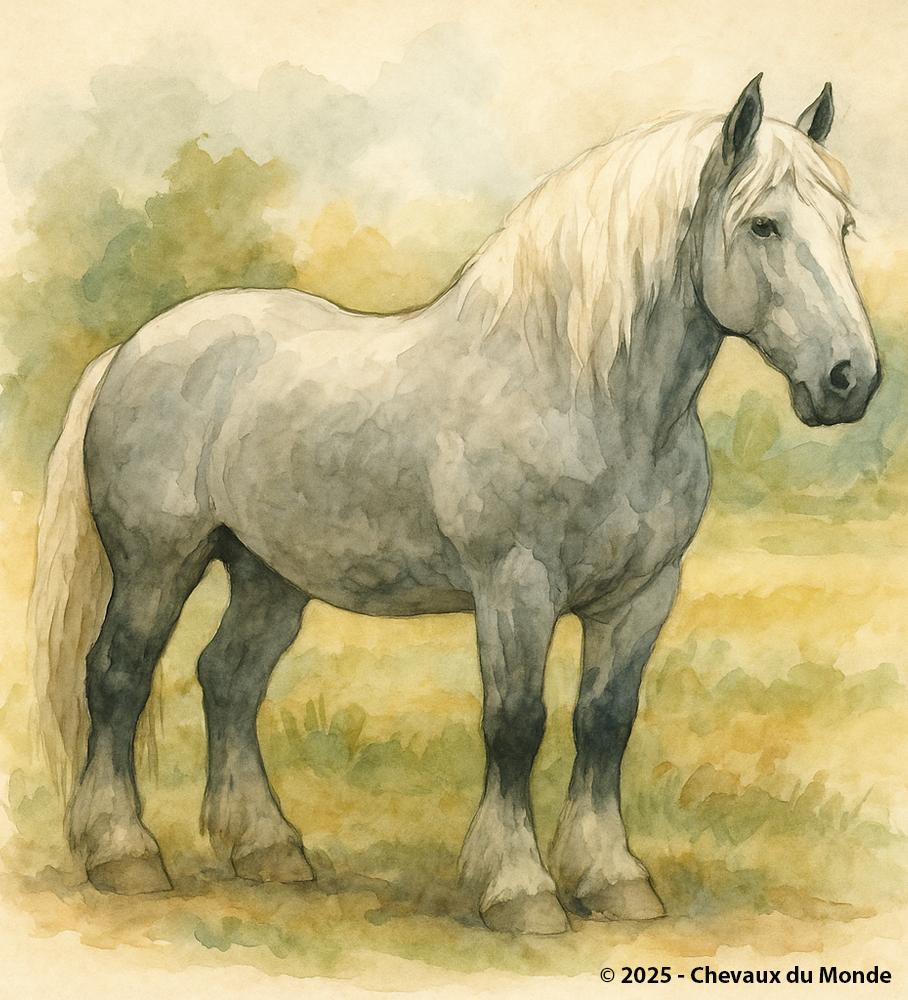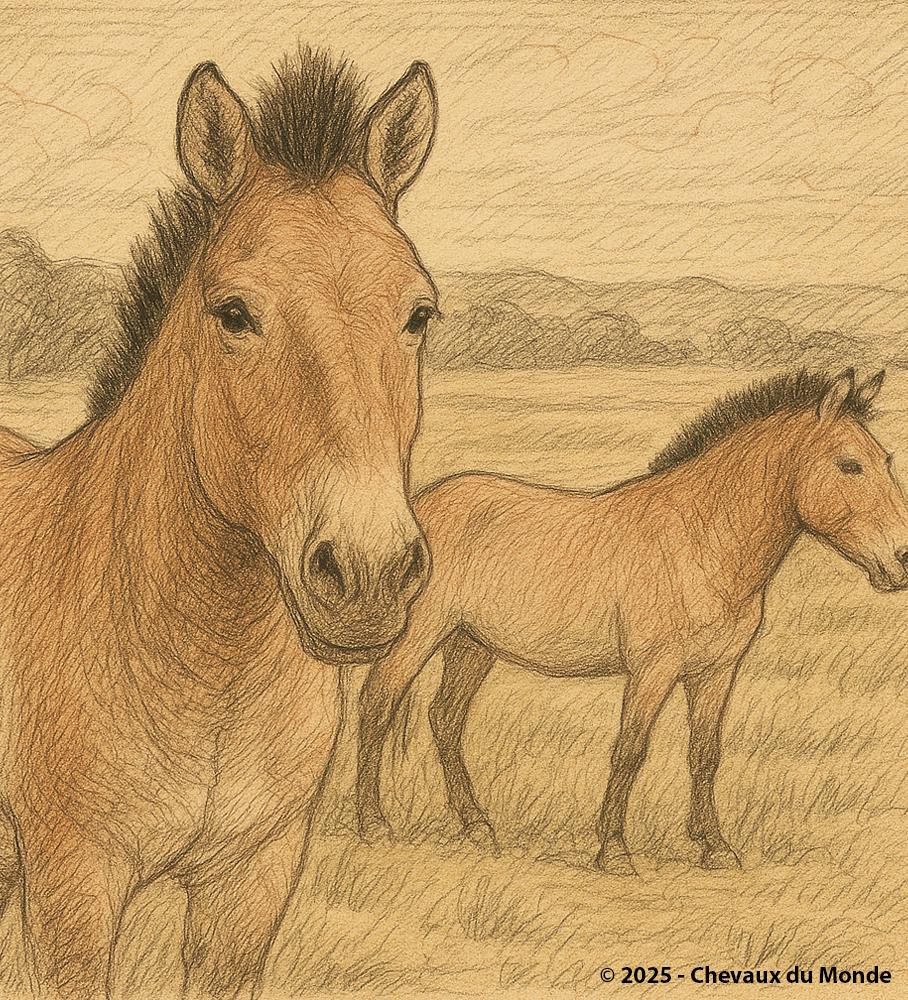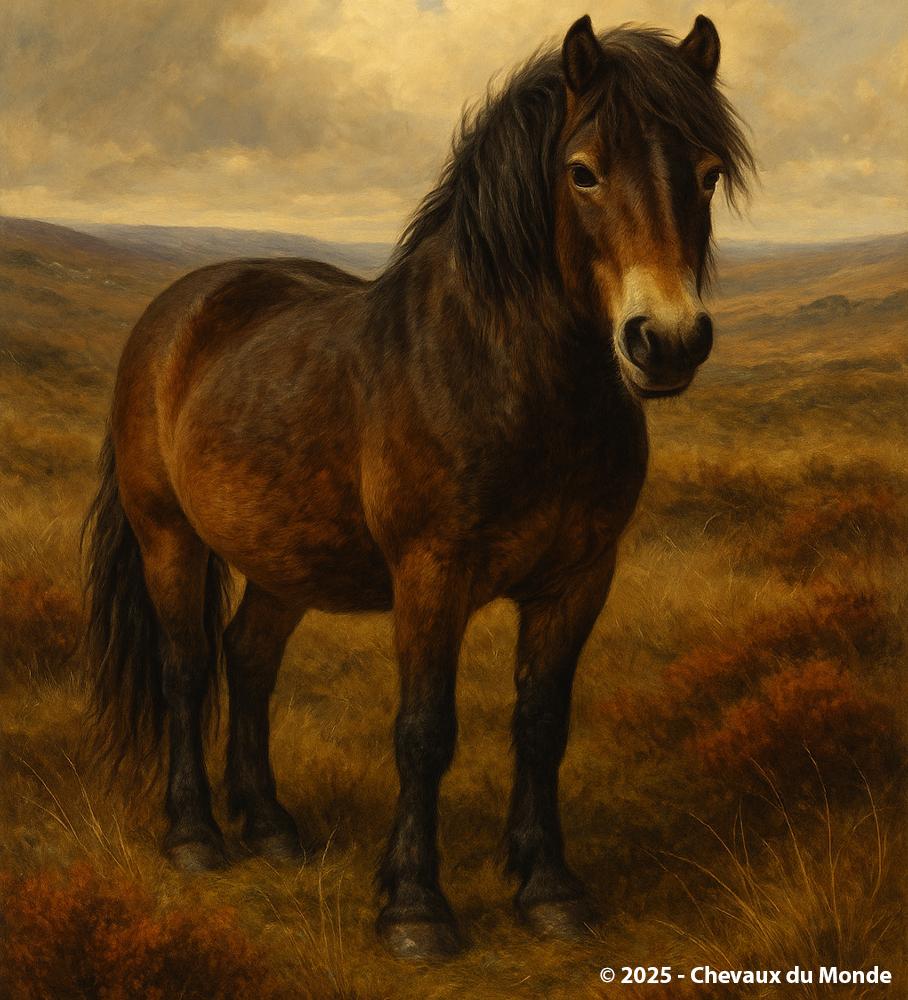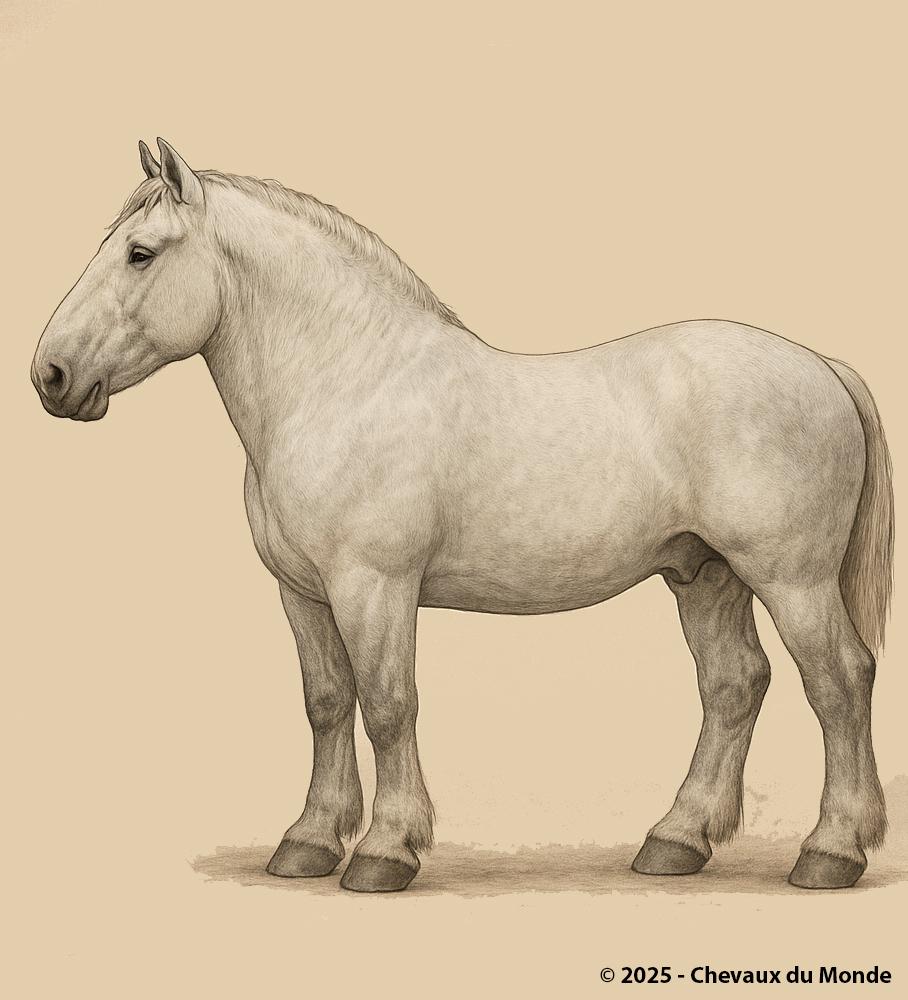PRESERVATION PROGRAMS FOR THE BOULONNAIS HORSE IN FRANCE

ride of Northern France: the Boulonnais represents valuable genetic heritage preserved through national conservation programs.
The Boulonnais horse, nicknamed the “Thoroughbred of draft horses” for its elegance and strength, is one of the oldest French draft breeds. Originating from the Boulonnais region in Pas-de-Calais, it was once indispensable for agricultural work and transport. But like many draft breeds, it suffered a dramatic decline with the mechanization of farming.
Today, its survival depends on strict preservation programs supported by the State, breeders’ associations, and regional stakeholders.
1. The Challenges of Preservation
1.1 A Living Heritage Under Threat
- Very low numbers (around 1,000 individuals recorded at the beginning of the 2000s).
- High risk of inbreeding and genetic erosion.
- Loss of agricultural use, requiring a reinvention of economic outlets (tourism, ecological traction, horse meat).
1.2 Official Recognition
- Breed registered in the stud-book since 1886.
- Classified among endangered breeds by the FAO and recognized by the European program for the preservation of animal genetic resources.
2. The Key Stakeholders in Conservation
2.1 France Trait and IFCE
- The French Institute for Horse and Riding (IFCE) plays a central role: monitoring births, managing the stud-book, promoting the breed.
- France Trait brings together draft horse breeders, including the Boulonnais, and advocates for their economic recognition.
2.2 The Boulonnais Horse Breeders’ Union
- Breeders’ association created to defend the interests of the breed.
- Organization of model and gait competitions.
- Public awareness initiatives (festivals, demonstrations, tourism partnerships).
2.3 Local Authorities
- The Hauts-de-France Region provides financial support to breeders.
- Promotion of the Boulonnais in regional events and cultural projects.
3. Specific Preservation Programs
3.1 Genetic Management
- Implementation of controlled breeding plans to reduce inbreeding.
- Careful use of assisted reproduction (artificial insemination).
- Monitoring of bloodlines by genetic experts in collaboration with IFCE.
3.2 Financial Support for Breeders
- Birth grants to encourage reproduction.
- Regional and national aids for the preservation of endangered breeds.
- Subsidies for participation in shows and promotion of breeding stock.
3.3 Diversification of Economic Outlets
- Development of modern animal traction (vineyards, market gardening, forestry, and landscape management).
- Use in tourism, carriage driving, and equestrian shows.
- Maintenance of the horse meat industry, still serving as an economic outlet for some breeders despite its sensitivity.
4. Results Achieved
4.1 Stabilization of Numbers
- From fewer than 1,000 individuals in 2000, the population increased to about 1,200 to 1,500 heads in the 2020s.
- Maintenance of sufficient genetic variability thanks to international cooperation (exports to other European countries).
4.2 Renewed Visibility
- Regular participation in the Paris Agricultural Show.
- Presence at regional festivals and fairs (Boulogne-sur-Mer, Samer, Desvres).
- Promoted as a heritage symbol of the Hauts-de-France region.
5. Future Perspectives
5.1 Strengthening the Economic Sector
- Further development of alternative uses (urban traction, green tourism).
- Promoting recognition of the Boulonnais as a prestige horse beyond Northern France.
5.2 European Cooperation
- Strengthening ties with countries where the Boulonnais has been exported (Germany, Belgium, Italy).
- Integration into cross-border biodiversity programs.
5.3 Raising Public Awareness
- Education on the historical role of draft horses.
- Educational programs in schools and regional museums.
- Promotion through social media and digital platforms.
Conclusion
The Boulonnais horse, once on the brink of extinction, now survives thanks to coordinated programs combining institutional support, breeders’ dedication, and reinvented uses. A symbol of strong regional identity and ancestral know-how, it embodies the importance of preserving equine biodiversity in the face of the globalization of sport breeds.
“Preserving the Boulonnais means keeping alive a unique cultural and genetic heritage in Europe.”
👉 Check out our full Boulonnais horse breed profile



